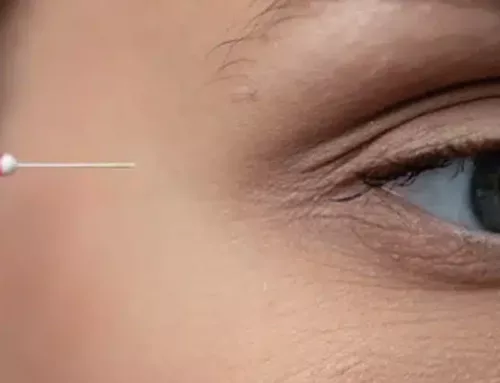Understanding Melasma Causes and Triggers
Melasma is a fairly common condition that often appears as excess pigment production within the skin. However, certain biological factors and triggers can lead to someone developing or re-activating their melasma.
Melasma can be challenging for patients and medical professionals, as we are still learning about the condition and what causes it to wax and wane. The information we do have, however, can help us recognize melasma triggers and avoid them to better control the condition.
On The Skin Report podcast, Dr. Simran Sethi, an Internal Medicine doctor and the Founder and Medical Director of RenewMD medical spas, discusses how people of color can treat conditions that affect the skin and its melanin production. The episode is a part of our October Series on melasma, covering how the disease affects melanin production in the skin and how biological and environmental factors impact its development.
Who is Most Susceptible to Melasma?
To better understand why melasma forms, let’s first look at the similar traits of people who commonly develop this skin condition. Factors like gender, skin type, and age can make a person more or less susceptible to developing melasma.
img src=”https://renewmdwellness.com/wp-content/uploads/2022/10/fitzpatrick-scale.jpg” alt=”” width=”1062″ height=”500″ class=”aligncenter size-full wp-image-3637″ />
Depending on physical characteristics like skin type and ethnicity, certain individuals are more likely to develop melasma than others, and at different times. People with skin types III-V on the Fitzpatrick Scale are most likely to experience melasma, and people with darker skin shades of type IV and V tend to include higher rates of men who experience the condition. Age and ethnicity also influence a person’s likelihood of developing melasma. The lighter a person’s skin type is, the earlier the emergence of melasma is in their lifetimes.
While members of any sex can develop melasma, the condition is most commonly seen in females of reproductive age. Using an oral contraceptive or experiencing hormonal changes from pregnancy, menopause, or other hormonal replacement therapies can often trigger hyperpigmentation. High estrogen levels and progesterone levels are also thought to promote melasma. Finally, individuals with a first-degree relative who has melasma are more likely to experience it themselves and develop it earlier than someone without any family history of the condition.
So, what does this all tell us? Considering the trends and facts gathered about people highly susceptible to melasma, someone can develop an informed idea of whether or not they will likely experience the condition. While we cannot change things like family history, age, ethnicity, and other biological factors, those likely to develop melasma can still avoid environmental and lifestyle triggers that impact its development.
What are Melasma Triggers, and How Can You Avoid Them?
Melasma can exist either in an inactive phase where the condition is dormant or an active phase where it causes impacted areas of the skin to expand and darken. Three of the main things that trigger melasma to enter its active phase include heat, light, and inflammation. Read on to learn more about these triggers, how they impact melasma’s activity in skin of color, and how you can avoid them.
Melasma Trigger: Heat
Heat can irritate melasma, which is why many people experience melasma outbreaks in the summertime (along with more prolonged sun exposure!). Unfortunately, this can also include heat exposure not just from the sun, but from medical aeshetics laser therapies, which explains why many people of color are turned away from laser therapy, as inexperienced providers want to avoid triggering hyperpigmentation in patients with darker skin tones.
Fortunately, not all laser treatments will lead to melasma activity in skin of color. A laser therapy that is well studied in melasma is called the Picosure laser, which can be used safely in melanated skin. Keep on listening to The Skin Report to learn more details about this skin treatment later in the melasma series.
Melasma Trigger: Light
Light can also trigger melasma activity, including UVA, UVB light, and visible light, abundant in indoor lighting, and blue light from electronic devices. All of these light sources can increase pigmentation in melasma. Sunlight and blue light can cause lesions as pigment-producing cells are activated by the sun. At the same time, indoor light and light from electronic devices can worsen melasma in people with darker skin tones.
To avoid light as a melasma trigger, people should always wear sunscreen every day, rain or shine, and reapply throughout the day. In addition, avoiding sun exposure by wearing hats is a great way to offer even more protection for your skin and eyes. For blue light, getting a blue light protection screen to attach to your computer and cell phone screens can block up to 50% blue light exposure, protect your eyes from eye strain, and reduce the risk of developing degenerative eye issues.
Melasma Trigger: Inflammation
Inflammation often occurs due to breaks in the skin barrier and can increase pigment production. Practices like using harsh skincare products may cause the skin to become more sensitive and dry, leading to skin inflammation. For example, serums containing high retinol strengths or exfoliants with high chemical concentrations or large particles can contribute to inflammation, especially in melanated skin.
To avoid inflammation as a melasma trigger, the best thing you can do is to stay informed as a beauty consumer, as this can help you steer clear of harsh ingredients for your skin. Choosing not to use harsh products and ingredients can keep you from experiencing inflammation that would otherwise irritate your melasma. To learn more about what steps, products, and procedures are best for your skin tone, tune into the September series of The Skin Report, all about caring for skin of color!
***
Listen to The Skin Report podcast to learn more about the melasma condition and healthy skin treatments for people of color.







